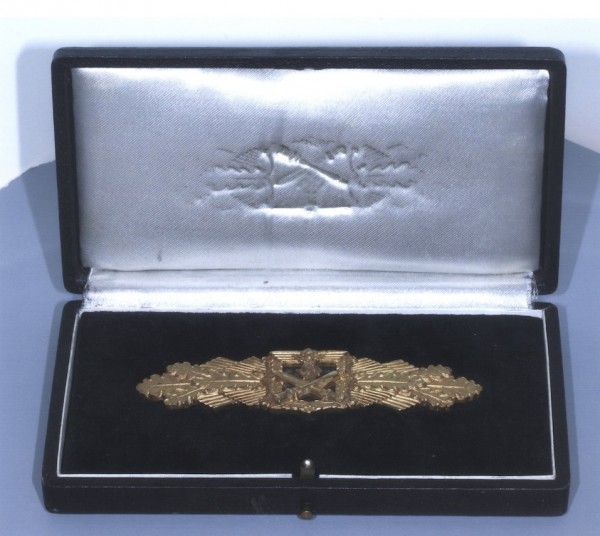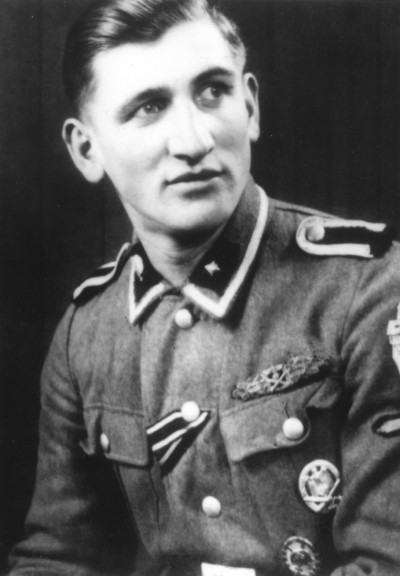The German Army’s Award for hand-to-hand combat - Gordon Williamson
The Close Combat Clasp was instituted by Adolf Hitler on 25 November 1942 to reward those who had been engaged in direct hand to hand fighting with the enemy.
The award was designed by artist Wilhelm Ernst Peekhaus of Berlin and consisted of a small square central motif of crossed stick grenade and bayonet topped by an eagle with swastika within an oakleaf frame. This central motif was voided, with a small blackened metal backplate affixed to the reverse in order to highlight the motif.
From either side emerged a spray of oakleaves interspersed with sun rays.
On the reverse of the award was a wide horizontal pin for attachment to the tunic, normally by two small loops sewn just above the left breast pocket.
Only 8 firms have been positively identified as having manufactured the Close Combat Clasp.

The award was manufactured in three grades,
Bronze for 15 days close combat
Silver for 30 days close combat (20 days if wounded)
Gold for 50 days close combat (40 if wounded)
Retrospective credits were given for service prior to the introduction of the award, as follows
8 Months – 5 days credit
12 Months – 10 days credit
15 Months – 15 days credit.

An amendment to the institution order on 30 August 1944 stated that those who qualified for the Close Combat Clasp in Gold would also receive the German Cross in Gold.
The high regard in which the award was held can be seen in the fact that Hitler reserved the right to bestow the awards of the Gold Clasp personally. Awardees also received a special 21 day leave pass
In the event, only around 619 awards of the Gold Clasp were bestowed, placing authentic issued examples amongst Germany’s rarest awards.
Further enhancing the status of the Gold award, special deluxe versions were produced in fire gilded tombak bronze. These, though devoid of any manufacturer’s markings, were made by the C E Juncker firm in Berlin. They are instantly recognisable by the fact that the backing plate is retained by a small central rivet and a tiny retaining hook soldered to the reverse top edge in the centre.
Whilst these were certainly manufactured and awarded, it does not seem that every recipient of the Gold clasp received the deluxe version, some only being given the standard gold washed zinc version. Some award ceremonies were held to award these in batches to multiple recipients. On these occasions, the awards were made by high ranking dignitaries such as Generaloberst Guderian, Reichsfuhrer-SS Himmler etc and filmed for posterity. On these occasions it can be seen the awards were contained in a small oblong black presentation case and it is likely that these examples were of the “deluxe” type.
Receipt of the award often brought with it a spell of well earned home leave and sometimes a promotion.
The non-deluxe awards were delivered in either a small paper envelope or cardboard box and were accompanied by a Besitzzeugnis or Certificate of Possession.

.
